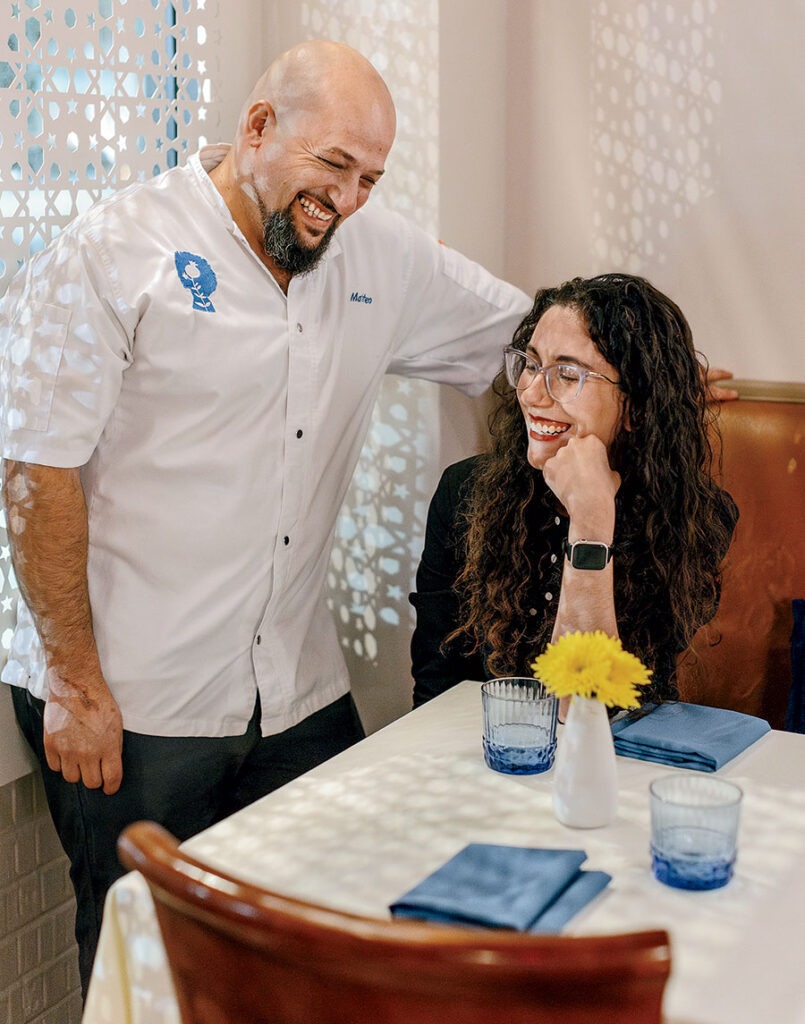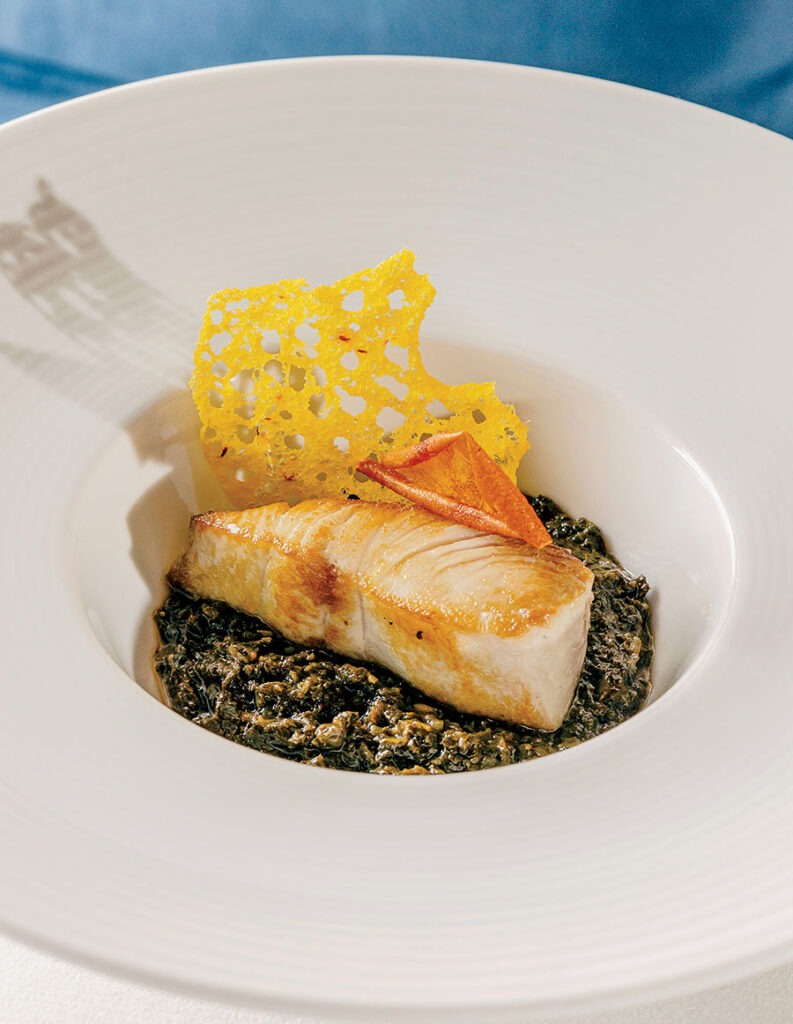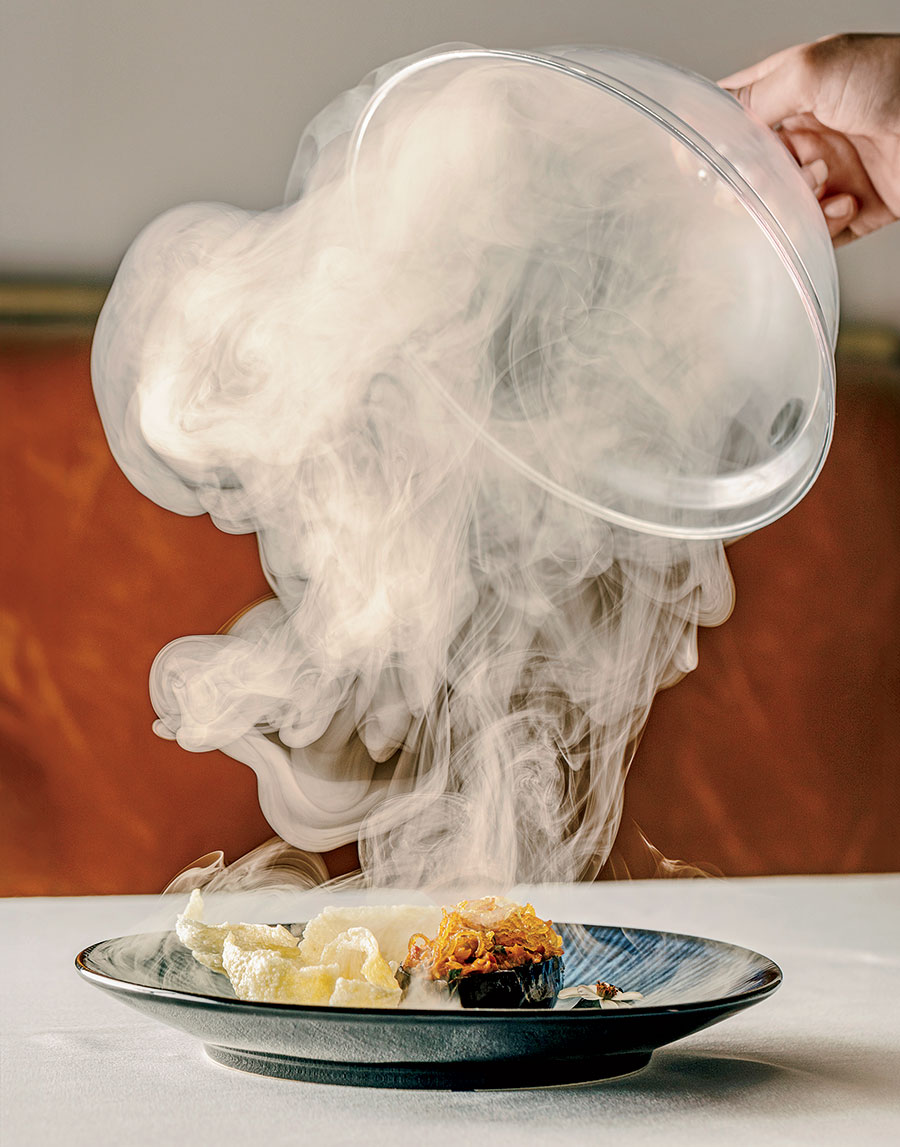If you’ve ever sat down to a sumptuous Persian meal, then you’ll likely picture this: a table laden with stews, grilled meats, and a grand sabzi khordan, a platter piled high with fresh herbs like tarragon and cilantro, cubes of feta, crunchy raw vegetables, and walnuts soaked in water to remove their bitterness. A plate of barbari flatbread will make the rounds. In a home, the host may present a chelo, an inverted pot of basmati rice topped with a saffron crust, the treasured tadig. At a restaurant, you may find yourself facing a fragrant mound of basmati so massive it’ll figure in your next four meals.
“It is very much a family-style cuisine,” says restaurateur Mariam Shahsavarani. “But I also knew it was not outside the realm of possibility to design a menu for individual portions. That way, you get to expose people to dishes they may not have ordered otherwise. And they don’t get so stuffed.”
She undertakes that mission at Maman Zari, a Persian tasting-menu spot she opened this past summer with her business partner and chef, Matteo Lo Bianco, in Albany Park. First-time restaurant owners, they offer something special here, a distillation of the flavors, techniques, and seasonings that open the door to the cooking of this part of the world. Their seven-course menu (with a vegetarian option) moves briskly through its catchy choreography (smoke and cotton candy are involved) and offers moments of real delight. I’ve been twice and left both times feeling well nourished and not at all mad at the $85 price. The menu is maybe 10 percent too fussy but never less than 100 percent charming.
Shahsavarani, a native Chicagoan and former flight attendant who was ready for a career shift, figured that Maman Zari’s stretch of Kedzie Avenue — rife with Middle Eastern food options — would provide the right context to explore the Persian cooking she knew from her father, Farzad, and her grandmother, for whom the restaurant is named. Lo Bianco, a family acquaintance and veteran of such restaurants as Coco Pazzo and Volare, applies his training and technique to Shahsavarani’s family recipes as well as the regional dishes she was exposed to in her travels through Iran (once even, as a young woman, hitchhiking with her grandfather).

To borrow a phrase from Shahsavarani’s former career, a meal at Maman Zari quickly achieves liftoff. A server arrives with a fancy interpretation of the eggplant dish mirza ghasemi set under a glass cloche filled with smoke. Up goes the dome, out wafts the smoke. The gesture may be dramatic, but the flavors are gentle: They go poof in the air like that smoke. The stuffed eggplant is soft and easy with its warming base of tomato and garlic, but all around it, flavors dance. The sabzi khordan has been miniaturized into a tiny hill of herbs and a fruity, puckery relish of Castelvetrano olives and pomegranate molasses. A flurry of yellow saffron rice crisps wash sunshine over your palate and then disappear.
This course serves as an announcement: Here are the synaesthetic flavors of Persia. You can eat the colors and taste the fragrance. It’s such a great dish, and the only holdover from the summer menu, which I tried in early September. I was less bullish then. The vegetarian menu opted for wan mushrooms rather than more interesting center-of-the-plate items. Other dishes — compressed watermelon and feta with balsamic pearls, branzino in saffron beurre blanc — were more like fancy banquet food.
But this time around, the menu opens with an icon: kuku sabzi, the brilliantly emerald-hued herb frittata eaten to bring in Nowruz, the Persian New Year. It’s a beaut here, alive with a flavor that can only be described as “green” and set against a subtly tangy-sweet compote of barberries and apples. Though kuku sabzi is associated with spring, Shahsavarani assures me it is served at celebrations by Persian families year-round.

Lo Bianco plates with visual flair, so a Shirazi salad — elsewhere a simple dice of cucumbers, tomatoes, and onion — here arrives in an arrangement of Möbius cucumber ribbons that a server anoints with lime vinaigrette. It’s a knife-and-fork salad, enlivened by tiny mint buds replacing the dried mint that most Persian cooks would reach for. He has a deft palate that doesn’t rely on too much salt or fat to carry flavor. Ghalieh mahi is his re-creation of a southern Iranian fish preparation in which he sets a juicy little mahi mahi steak over a chunky green sauce that looks like creamed spinach but thrums with the flavors of tamarind, cilantro, and fresh fenugreek leaves. Wowza.
I’m so enchanted with the courses I’ve described thus far, and I feel so warm toward the service (the owners make the rounds, welcoming you as if in their home), that I want to be gentle as we hit some turbulence. I love the idea of a $45 wine pairing, but by the time they pour the fifth crisp, simple white in a row — this time a South African Chenin Blanc — I want to sit them down to talk about dry lambrusco, junmai sake, Beaujolais Nouveau, anything else. I found a plate of chicken roulade with sweet fruit compote just fine, though not as interesting as Shahsavarani’s story about the dish that inspired it, and the saffron rice fritter accompaniment was, I suppose, a fun-size version of tadig. By this point in the meal, while I would enjoy a stew and a too-big platter of rice to pass around, if only to inhale its fragrance, I know that’s not the program here, and I respect that.
So I turn to the tournedos of beef tenderloin, with its pomegranate glaze and walnut-herb butter. It’s tasty, like a barg kebab seen through a prism. Then, finally, what fun to eat rosewater-saffron ice cream festooned with cotton candy and little cookies no bigger than dots. I can and will feast on Persian stews another time. When I come to Maman Zari, I’m here to savor.



